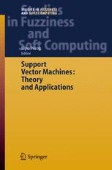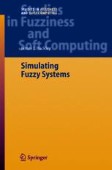Search
Search Results
-
Characterization of Certain Groups and Fuzzy Subgroups
Fuzzy subgroups of Hamiltonian, solvable, P-Hall, and nilpotent groups are examined. The notions of generalized characteristic fuzzy subgroups, fully...
-
Nilpotent, Commutator, and Solvable Fuzzy Subgroups
As the title suggests, this chapter is concerned with nilpotent, commutator, and solvable fuzzy subgroups. We give two approaches for the development...
-
Dynamic Complexity in the Internet Traffic
The Internet is one of the most enormous autonomously distributed network systems created by human being. There is no central control in the Internet...
-
Dynamical Properties of Externally Driven TCP traffic
One of the most influential achievements of the last sanctuary was the emergence of a decentralized, highly heterogenous, global communication...
-
An Accelerated Robust Support Vector Machine Algorithm
This chapter proposes an accelerated decomposition algorithm for robust support vector machine (SVM). Robust SVM aims at solving the overfitting...
-
Neuro-Fuzzy Based Hybrid Intelligent Systems for Fault Diagnosis
In the last ten years, the field of diagnosis has attracted the attention of many researchers, both from the technical area as well as from the...
-
Integration of Explicit and Implicit Knowledge in Hybrid Intelligent Systems
The introduction of modular networks into fuzzy systems provides new insights into the integration of explicit and implicit knowledge in a...
-
Emergency Room Model
The system in this chapter was adapted from an example in [1]. The flow through the system is shown in Fig. 13.1. Patients arrive, according to the...
-
Fuzzy Sets
In this chapter we have collected together the basic ideas from fuzzy sets and fuzzy functions needed for the book. Any reader familiar with fuzzy...
-
Fuzzy Systems Theory
In this chapter we consider systems whose performance depends on probability distributions and some of the parameters in these probability...
-
Unsupervised Learning Neural Networks
This chapter introduces the basic concepts and notation of unsupervised learning neural networks. Unsupervised networks are useful for analyzing data...
-
Fuzzy Rules Extraction from Connectionist Structures
In the conjugate effort of building shells for Hybrid Intelligent Systems with a homogenous architecture, based on neural networks, a difficult task...
-
Call Center Model
The queuing system in this chapter is shown in Fig. 10.1. This application was adopted from an example in [1].
-
Scalability Analysis
The empirical results of the last chapter were tantalizing. Easy and hard problems were automatically solved without user intervention in polynomial...
-
Oil Tanker Problem
This model has been adapted from an example in [5]. The system is shown in Fig. 18.1. This figure shows one cycle for an oil tanker. Let us follow an...
-
Preemptive Service
A small city has a small municipal garage that does maintenance and repair on city owned vehicles. There are two types of vehicles: (1) TYPE 1 is the...
-
Introduction to Pattern Recognition with Intelligent Systems
We describe in this book, new methods for intelligent pattern recognition using soft computing techniques. Soft Computing (SC) consists of several...
-
Supervised Learning Neural Networks
In this chapter, we describe the basic concepts, notation, and basic learning algorithms for supervised neural networks that will be of great use for...
-
Face Recognition with Modular Neural Networks and Fuzzy Measures
We describe in this chapter a new approach for face recognition using modular neural networks with a fuzzy logic method for response integration. We...
-
Neuro-Fuzzy Integration in Hybrid Intelligent Systems
In the last fifteen years, hybrid neural systems have drawn increasing research interest. This approach has been successfully used in various areas,...
